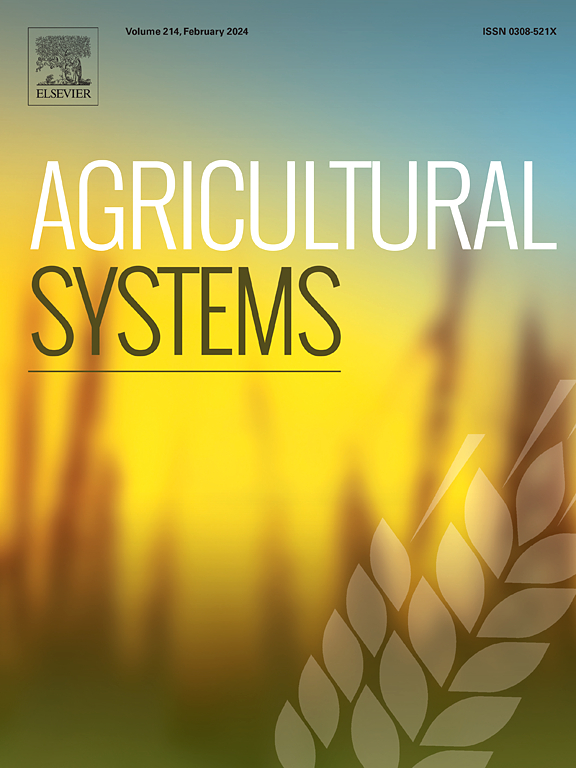番茄田杂草检测智能建模的时空稳定性研究
IF 6.1
1区 农林科学
Q1 AGRICULTURE, MULTIDISCIPLINARY
引用次数: 0
摘要
特定地点杂草管理(SSWM)代表了农业杂草控制向精确和可持续性的转变,通过选择性地施用处理。利用机器学习(ML)和深度学习(DL),特别是卷积神经网络(cnn),通过自动图像分析增强杂草检测能力。诸如需要广泛的标记数据集和杂草的时空变异性等挑战仍然存在。利用多年数据集提供了一种有效的解决方案,减少了劳动密集型的注释工作,并改善了不同条件下的模型泛化。目的通过对多年数据集的时间、空间和时空分析,建立并评价番茄田5种杂草(Cyperus rotundus L., YOLOv9, YOLOv10, RT-DETR)准确检测模型(YOLOv8, YOLOv10, RT-DETR)。方法研究在2021年和2022年生长季节在西班牙巴达霍斯州圣阿马利亚的商业番茄田进行。使用高分辨率佳能相机沿着“M”形轨迹系统捕获图像。专家手动标注杂草种类,并对图像进行增强和分割以增强数据集的鲁棒性。利用预训练的权重和一致的超参数,在不同的时间(基于年)、空间(基于字段)和时空(组合)数据集上训练模型。使用平均精度(AP)和平均精度(mAP)来评估性能。结果与结论应用DL模型可以有效地检测到杂草种类,强调了综合数据集对模型性能的重要性。时间分析仅依赖于往年的数据,平均平均精度(mAP)为0.7,表明有效性有限。使用同一年不同领域的数据,空间分析的精度有所提高(mAP: 0.81-0.89)。结合多年数据集的时空分析提供了最高的精度(mAP高达0.91),验证了整合不同时期不同数据的优势。整合多年数据集大大提高了基于dl的杂草检测模型的精度和效率。这种方法最大限度地减少了对劳动密集型注释过程的依赖,加速了模型部署,并提高了数据集的可变性,从而培养了更健壮和准确的预测能力。这种分析确保了环境条件、土壤类型和杂草出现模式的全面代表,将该方法的适用性扩展到番茄商业田的原始采样区域之外。此外,采样地区的环境和农业条件与世界上其他主要番茄产区的环境和农业条件相似,因此支持实验的可重复性和研究结果的更广泛适用性。本文章由计算机程序翻译,如有差异,请以英文原文为准。

Spatio-temporal stability of intelligent modeling for weed detection in tomato fields
CONTEXT
Site-specific Weed Management (SSWM) represents a shift towards precision and sustainability in agricultural weed control by applying treatments selectively. Leveraging machine learning (ML) and deep learning (DL), particularly convolutional neural networks (CNNs), enhances weed detection capabilities through automated image analysis. Challenges such as requiring extensive labeled datasets and spatio-temporal variability of weeds remain. Utilizing multi-year datasets provides an effective solution by reducing labor-intensive annotation efforts and improving model generalization across varying conditions.
OBJECTIVE
This study aimed to develop and assess DL models (YOLOv8, YOLOv9, YOLOv10, RT-DETR) for accurate detection of five weed species (Cyperus rotundus L., Echinochloa crus-galli L., Setaria verticillata L., Portulaca oleracea L., Solanum nigrum L.) in tomato fields by integrating multi-year datasets through temporal, spatial, and spatio-temporal analyses.
METHODS
The study was conducted in commercial tomato fields in Santa Amalia, Badajoz, Spain, across the 2021 and 2022 growing seasons. Images were systematically captured using a high-resolution Canon camera following an “M”-shaped trajectory. Experts annotated weed species manually, and images underwent augmentation and segmentation to enhance dataset robustness. The models were trained on distinct temporal (year-based), spatial (field-based), and spatio-temporal (combined) datasets, utilizing pre-trained weights and consistent hyperparameters. Performance was evaluated using Average Precision (AP) and Mean Average Precision (mAP).
RESULTS AND CONCLUSIONS
Applying DL models effectively detected weed species, highlighting the importance of comprehensive datasets for model performance. The temporal analysis, relying solely on previous-year data, achieved a mean average precision (mAP) of 0.7, demonstrating limited efficacy. Using same-year but different-field data, spatial analysis showed improved accuracy (mAP: 0.81–0.89). The spatio-temporal analysis combining datasets from multiple years provided the highest accuracy (mAP up to 0.91), validating the advantages of integrating diverse data across different periods.
SIGNIFICANCE
Integrating multi-year datasets substantially enhances the precision and efficiency of DL-based weed detection models. This methodology minimizes the dependency on labor-intensive annotation processes, accelerates model deployment, and boosts dataset variability, thus fostering more robust and accurate predictive capabilities. This analysis ensures a comprehensive representation of environmental conditions, soil types, and weed emergence patterns, extending the method's applicability beyond the original sampled areas in tomato commercial fields. Moreover, the environmental and agricultural conditions of the sampled area resemble those found in other major tomato-producing areas worldwide, thus supporting the reproducibility of the experiments and the broader applicability of the study's findings.
求助全文
通过发布文献求助,成功后即可免费获取论文全文。
去求助
来源期刊

Agricultural Systems
农林科学-农业综合
CiteScore
13.30
自引率
7.60%
发文量
174
审稿时长
30 days
期刊介绍:
Agricultural Systems is an international journal that deals with interactions - among the components of agricultural systems, among hierarchical levels of agricultural systems, between agricultural and other land use systems, and between agricultural systems and their natural, social and economic environments.
The scope includes the development and application of systems analysis methodologies in the following areas:
Systems approaches in the sustainable intensification of agriculture; pathways for sustainable intensification; crop-livestock integration; farm-level resource allocation; quantification of benefits and trade-offs at farm to landscape levels; integrative, participatory and dynamic modelling approaches for qualitative and quantitative assessments of agricultural systems and decision making;
The interactions between agricultural and non-agricultural landscapes; the multiple services of agricultural systems; food security and the environment;
Global change and adaptation science; transformational adaptations as driven by changes in climate, policy, values and attitudes influencing the design of farming systems;
Development and application of farming systems design tools and methods for impact, scenario and case study analysis; managing the complexities of dynamic agricultural systems; innovation systems and multi stakeholder arrangements that support or promote change and (or) inform policy decisions.
 求助内容:
求助内容: 应助结果提醒方式:
应助结果提醒方式:


